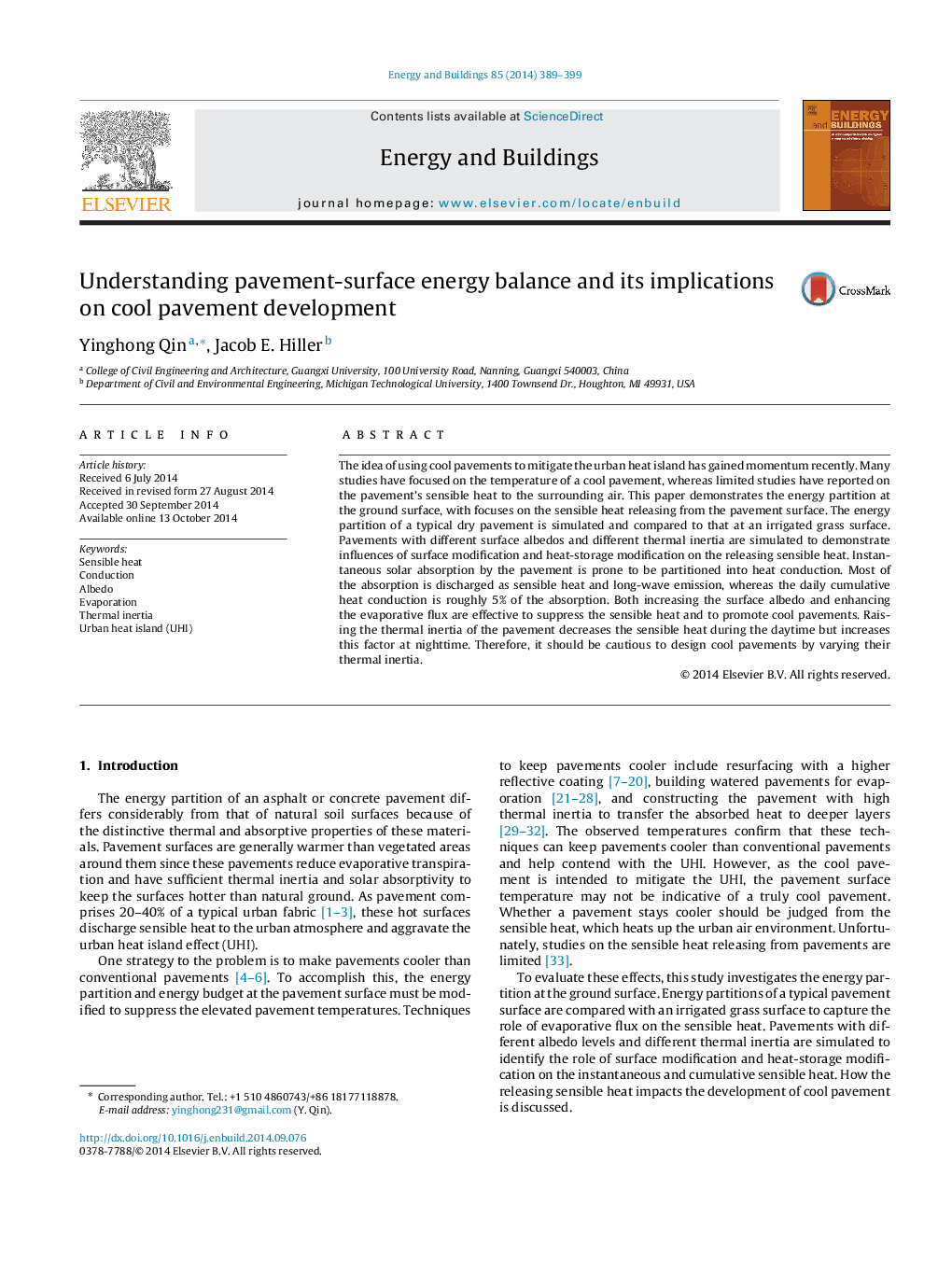| کد مقاله | کد نشریه | سال انتشار | مقاله انگلیسی | نسخه تمام متن |
|---|---|---|---|---|
| 6733172 | 504053 | 2014 | 11 صفحه PDF | دانلود رایگان |
عنوان انگلیسی مقاله ISI
Understanding pavement-surface energy balance and its implications on cool pavement development
ترجمه فارسی عنوان
درک تعادل انرژی سطوح پیاده رو و دلالت آن در توسعه روانکاری سرد
دانلود مقاله + سفارش ترجمه
دانلود مقاله ISI انگلیسی
رایگان برای ایرانیان
کلمات کلیدی
ترجمه چکیده
ایده استفاده از پیاده روهای سرد برای کاهش جزیره گرمایی شهری به تازگی به دست آورده است. مطالعات بسیاری بر روی درجه حرارت یک پیاده رو سرد متمرکز شده اند، در حالیکه مطالعات محدودی بر روی حرارت معقول پیاده رو به هوا اطراف گزارش داده اند. این مقاله نشان می دهد پارتیشن انرژی در سطح زمین، با تمرکز بر انتشار گرما حساس از سطح پیاده رو. پارتیشن انرژی پودری معمولی خشک شده شبیه سازی شده و با سطح علف های آبی قابل مقایسه است. پوشش هایی با آلبداهای سطح مختلف و آنالیز حرارتی مختلف برای نشان دادن تأثیر تغییرات سطح و اصلاح حرارت ذخیره سازی بر روی گرمای حساس آزاد، شبیه سازی می شوند. جذب خورشیدی لحظه ای توسط پیاده رو مستعد رسیدن به هدایت حرارتی است. اکثر جذب به عنوان گرما و گرما و حرارت طولانی تخلیه می شود، در حالیکه هدایت حرارت انباشته روزانه تقریبا 5٪ جذب است. هر دو افزایش سطح آلبدوو و افزایش شار تبخیری برای جلوگیری از گرمای حساس و ارتقاء آهنگ های خنک موثر هستند. افزایش اینرسی حرارتی پیاده رو، گرمای حساس در طول روز را کاهش می دهد، اما این عامل را در شب افزایش می دهد. بنابراین، با تغییر درجۀ حرارتی خود، باید طراحی های شگفت انگیز را محرمانه نگه داشت.
موضوعات مرتبط
مهندسی و علوم پایه
مهندسی انرژی
انرژی های تجدید پذیر، توسعه پایدار و محیط زیست
چکیده انگلیسی
The idea of using cool pavements to mitigate the urban heat island has gained momentum recently. Many studies have focused on the temperature of a cool pavement, whereas limited studies have reported on the pavement's sensible heat to the surrounding air. This paper demonstrates the energy partition at the ground surface, with focuses on the sensible heat releasing from the pavement surface. The energy partition of a typical dry pavement is simulated and compared to that at an irrigated grass surface. Pavements with different surface albedos and different thermal inertia are simulated to demonstrate influences of surface modification and heat-storage modification on the releasing sensible heat. Instantaneous solar absorption by the pavement is prone to be partitioned into heat conduction. Most of the absorption is discharged as sensible heat and long-wave emission, whereas the daily cumulative heat conduction is roughly 5% of the absorption. Both increasing the surface albedo and enhancing the evaporative flux are effective to suppress the sensible heat and to promote cool pavements. Raising the thermal inertia of the pavement decreases the sensible heat during the daytime but increases this factor at nighttime. Therefore, it should be cautious to design cool pavements by varying their thermal inertia.
ناشر
Database: Elsevier - ScienceDirect (ساینس دایرکت)
Journal: Energy and Buildings - Volume 85, December 2014, Pages 389-399
Journal: Energy and Buildings - Volume 85, December 2014, Pages 389-399
نویسندگان
Yinghong Qin, Jacob E. Hiller,
